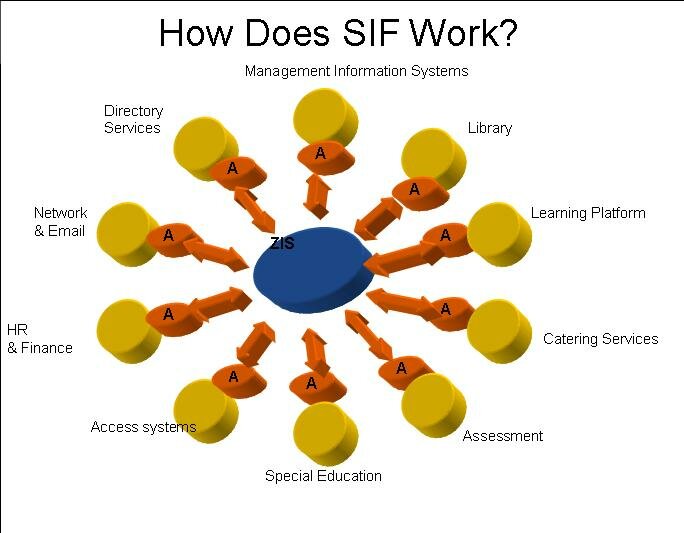Overview:
The Schools Interoperability Framework (SIF) is a data sharing specification. The SIF Specification enables applications within a school or between schools and the Local Authority to share data through a framework based upon open standards. The open standards approach allows suppliers to focus on their own application interface rather than to learn and support numerous other supplier specific application interfaces.
The historical lack of interoperability and data sharing between computer systems used in the schools sector has been identified as a key obstacle to the effective use of data and performance information to support teaching and learning. The objective is to have all educational software applications capable of sharing all agreed data simply and securely. At present the approach relies on either manual based integration or numerous proprietary exchange methods this leads to a number of issues:
• Application “Islands”
• Duplicate Data Entry
• Manual Synchronisation
• Reduced accessibility to data
• Costly and time consuming reporting methods
• Costly development/ support model due to numerous point to point interfaces required
Approach:
In response to these issues the SIF has been developed and designed to enable:
• One to many interactions and sharing of data between applications within the education sector and beyond efficiently, reliably and securely
• Real time data collection
• Real time reporting
• Potential architecture convergence with Web Services
• Improved management and accessibility of data
The SIF standard is a blueprint for systems integration in schools and is an emerging standard:
• SIF features a secure model of controlling access to information
• SIF features reliable communications; the delivery of data is guaranteed even when systems go down
• SIF models both data and messaging
• SIF allows participating systems to be grouped into logical zones for easy control
The UK proof of concept was completed April 2007 proving SIF technology’s suitability to the UK. Nine Birmingham schools and four leading software suppliers participated. In parallel to this a Governance structure was established which approved the release of the first SIF Implementation UK Specification v1.0.
How does SIF work:

• A central Zone Integration Server (ZIS) manages and orchestrates the exchange of data among applications in a zone
• Supports a one to many model of data sharing
• Each application is represented by a SIF Agent (A) that communicates with the ZIS to provide and/or subscribe to data in the zone
• SIF is based on XML over HTTPS which provides a standards based, secure transport method
Benefits:
• Supports choice and flexibility.
• It is a robust, flexible and secure transport mechanism.
• Provides interoperability standards and governance arrangements.
• Enables data synchronisation across systems.
• Allows seamless integration of applications
• Reduces burdens – particularly on teachers.
• Enables the sharing of data horizontally between schools’ applications as well as vertically between schools and other parties such as local authorities and govt. agencies
• Facilitates better management and accessibility of data, supporting initiatives such as real time reporting to parents.
• Supports the movement of the right data to the right people at the right time.
For further information and enquiries please contact